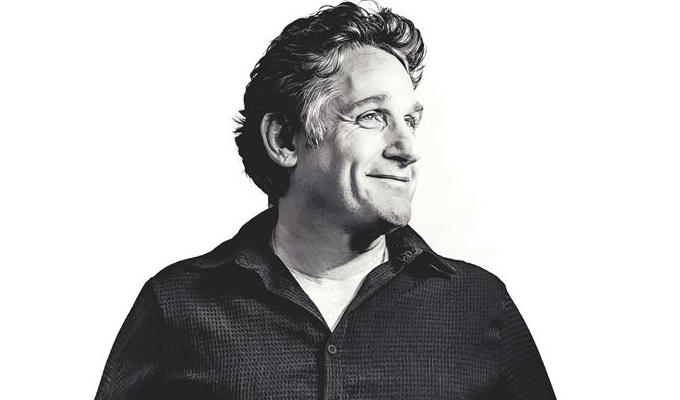
There's no such thing as canned laughter
...but a laugh track is different, Michael J. Buchanan-Dunne explains
Good sitcoms are ruined by ‘canned laughter’. It sounds false and forced, so why do producers use it? Don’t they realise that we know this laugh track has been shamelessly inserted by some faceless creative, sat in an edit suite, trying to crowbar in a barrage of pre-recorded giggles, titters and guffaws into a show that clearly stinks, hoping that with enough trickery they can make us believe it’s funnier than it actually is? Because that’s how it’s done, right? Isn’t it?
No, sorry, it isn’t… but it used to be.
In the late 1940s American radio engineer Charles Douglass pioneered a multi-track recording system which ensured that the components of a live show (dialogue, music and sound effects) could be recorded independently, with one additional track reserved for just the audience’s reaction, which became known as the ‘laugh track’.
This technique allowed engineers greater flexibility when editing shows, especially as – in a country as large and diverse as America – different states had different editorial standards, and by editing numerous versions of the same show, performers no longer had to replicate parts or even whole shows for each territory. Engineers quickly realised the value of a laugh track that, in the same way you would edit together all of the best actor’s performances onto one track, you could also edit together the best reactions from the audiences onto another.
Network television was quick to catch on to the laugh track as it solved another problem they’d been wrestling with for years in the studio audience sitcom – sound. Most early sitcoms were shot in draughty studios with bad insulation and weak microphones, which picked up every cough, clank or squeak, and if the audience laughed over a gag, that gag was lost forever. The laugh track was the solution. At first (as with radio) it was used solely to improve the quality of the audience reaction, then to supplement it, and finally it replaced the audience reaction all together, as the networks realised that by editing their own, it gave them greater creative freedom. To cope with demand from network executives Charles Douglass invented the Laffbox, a box of pre-recorded laughter, dubbed ‘canned laughter’, which he could insert on demand into any part of any show.
And, as they say, hilarity ensued… and it sounded awful.
The problem was, as can be seen in 1950/60’s American sitcom classics such as Hogan’s Heroes, The Lucy Show, The Munsters and The Beverly Hillbillies, that the canned laughter did have enough range to authentically convey such a complex human emotion, therefore when it was used it lacked subtlety, spontaneity, naturalism and quite often logic.
As a plus though, it was cheap; cheaper than hiring a studio, technicians and bussing in an audience to record their reactions. And when the networks started testing pilots, both with and without a laugh track (whether ‘canned’ or not), test audiences opted for a laugh-track’, and that became the industry standard. Luckily in 1950/60s Britain, we were yet to adopt ‘canned’ laughter, as sitcoms such as Hancock’s Half Hour and Steptoe & Son, the majority of which were directed by radio producers, were filmed and transmitted live in front of a live studio audience. But we weren’t far behind.
So why did audiences feel they needed a laugh track? Because laughter is a shared experience, at its most primal level it’s about social engagement and often (as seen in live shows) audiences are reticent to laugh openly, especially as comedy is often subjective, so for an audience to laugh together it often requires an alpha member of the audience to give them that permission by laughing first. But for the home television audience, who had no alpha member, the laugh track became that person.
Thankfully by the 1970/80s, as creative control began to be wrestled away from the studios and put in the rightful hands of the writer/performers (who often also served as producer/directors), shows such as The Mary Tyler Moore Show and Happy Days moved away from ‘canned’ laughter and returned to the traditions of filming before a live studio audience, as the actors’ performance was often enhanced by the reaction.
By the 1980s, audiences were weary of ‘canned’ laughter, producers knew it, so shows such as Cheers and The Cosby Show continued to buck the trend and openly boasted that their shows were ‘filmed before a live studio audience’ almost as a badge of authenticity, that the laughter you’re about to hear was genuine, and it was.
By the 1990s, sitcoms like Friends benefitted hugely from live studio recordings, by using the audience’s reaction to test, finesse and hastily rewrite any jokes which had failed by having a team of writers on-set. This was one of the reasons the show was such a big success, because a genuine live audience reaction actually improved the quality of the writing and the performance. ‘Canned laughter’ was dead.
So does ‘canned laughter’ still exist today? No. The Producer’s Guidelines which all broadcasters must adhere to has ensured that. Does the laugh track still exist? Of course, but only in the same way that it always has; along with the music, dialogue and sound effects, on their own individual soundtracks, because laughter is and will always be an incredibly vital part of any performance, especially in a comedy. So why does the laughter in modern studio audience sitcoms often sound so false, surely that’s ‘canned laughter’? No, I’m afraid that’s just called exhaustion.
If you’ve ever watched a sitcom being recorded, you’ll know that a 30-minute studio audience sitcom never takes 30 minutes to record. It can take an hour, or two hours, I once sat through a BBC Three pilot (which shall remain nameless) which took almost four hours to record. That was four hours of sitting in uncomfortable seats, under hot lights, with no air-con, unable to move, talk or (better still) leave. After the first hour it stopped being funny.
When you hear audience laughter in sitcoms and it sounds forced, that’s sometimes because it is. Laughter is a natural spontaneous reaction to an amusing and unexpected incident, it is instantaneous, unpredictable and impossible to repeat authentically, but unfortunately because of the way studio audience sitcoms are shot, they rely on repetition.
Almost without exception, every scene in a sitcom will be reshot numerous times owing to technical errors or performance fluffs, therefore each retake needs to be identical to the last so the vision and sound matches in the edit. Same camera move, same performance, same lighting and even the same laughter, at the same pitch, for the same length, in the same way.
The warm-up man will always prep the audience by saying, ‘OK we’re going to shoot that scene again, try and remember where you laughed last time and recreate that laugh’. The audience have effectively become performers, and they’re being asked as non-professional actors to act. That same BBC Three sitcom I sat through had a minimum of five-to-eight retakes for each scene, sometimes each line. That kind of endurance for any audience is punishing. Audiences don’t like hearing the same joke again and again, so being forced to sit and react repetitively is as torturous as it is unfunny.
US sitcom How I Met Your Mother gets around this issue by playing out the final edit of the studio recording in front of a different live studio audience and their reaction is recorded and edited into the final mix before transmission. Therefore the laugh track becomes an honest, unedited and accurate response by a live audience who have watched the show in a way similar to how a home audience will. Modern sitcoms also use this process for any pre-recorded inserts (locations, stunts, or scenes impossible to recreate in front of a live audience), which are then edited and played in front of an audience and their reaction is recorded and added into the final edit later.
On the flipside, a studio audience’s reaction might actually appear bigger than the sitcom or joke requires. An audience might seem like they’re rolling in the aisles with laughter, when at home you’re only tittering, so it’s worth remembering three vital differences between watching a sitcom at home and at a live recording. The first being that the studio audience has already been warmed up, by a comedian, who (if they’re doing their job properly) will keep their energy high, where-as the home audience might come to the programme cold, maybe off the back of the news or a family argument.
Second, studio audiences are invariably fans of the show they have chosen to see, or for very niche comedies audiences are cherry-picked, and that’s why the laughter on Mrs Brown’s Boys is so much raucous than in most other sitcoms, because the majority of people who’d voluntarily choose to go to a recording of Mrs Brown’s Boys… are fans of Mrs Brown’s Boys. Producers want an audience who are going to relish every joke; what they want to hear is the sound of laughter, and what they don’t want is apathy. Apathy does not sound good.
And thirdly, watching a live studio audience sitcom is an event, it’s a chance to see the inner workings of television, to see the stars, and the cock-ups. It’s exciting, an experience, and for some people it’s also a rare night out, so obviously their reaction would be bigger. Would you cheer or applaud whilst watching a sitcom being recorded in a studio? Yes. Would you whilst watching it on TV? No. Your reaction would be exactly the same if you watched a playback of last night’s theatre recording of The Mousetrap or Les Miserables, it would be good, but not as good as being there… and you certainly wouldn’t clap or give a standing ovation at the end.
Gone are the days when neon signs flashed before a bewildered studio audience saying ‘Laugh Now’ or ‘Applause’ and has Charles Douglass’ Laffbox has been consigned to the archives, regarded as a curiosity of a bygone era, and is to be written about (and ironically) laughed at. Only six of the machines are still in existence,
‘Canned laughter’ no longer exists…
…which is not to say that some shows won’t finesse the audience’s reaction on the laugh track. They might increase the volume of the laughter (to mask an audible error), or move a laugh a second later so it doesn’t tread on the gag, but more often than not the audience’s reaction will be decreased as there’s no point treading on a good gag with laughter if no one can hear the gag.
Admittedly fast-turnaround and high-volume US series like Two & A Half Men and Mike & Molly do use a live audience recording but then supplement any gags which don’t hit the mark with pre-recorded laughter from different parts of the show during post-production, but those incidents are few and far between.
At its best, a studio audience sitcom is little more than a highlights package of the actual recording, with all the best bits kept in and (sometimes, but not always) all the worst bits taken out. That includes the dialogue, the music, the sound effects and also the laugh track.
The problem is that people still mistake a laugh track with ‘canned laughter’. So for clarification, here’s the difference; ‘canned laughter’ is the deliberate manipulation of pre-recorded audience reactions, which are taken and used out of context, to replace an authentic recording when the recorded reaction was either deemed inadequate for the producer’s needs, or does not exist at all. Laugh tracks are a vital recording of an audience’s (almost, but not entirely) natural reaction to the humour of a sitcom. Laugh tracks are not false but they can be forced, they are not created by machine but they can be manipulated. But the one thing a laugh-track is not... is ‘canned’.
Everybody gets this wrong, even TV reviewers, they shouldn’t, but they do.
• Michael J. Buchanan-Dunne worked as Development Editor for BBC Comedy for almost a decade, and is now a freelance scriptwriter and novelist
Published: 9 Mar 2015






